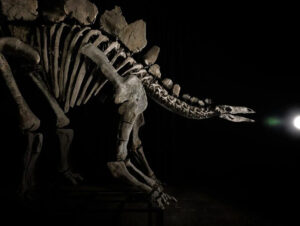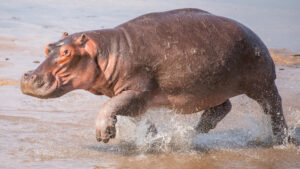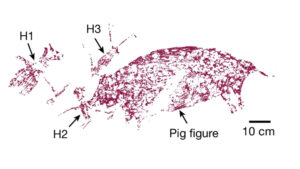Retired chemistry teacher Dean Warner was volunteering at a dig site for the Florida Museum of Natural History when he began unearthing bones — big ones.
“I started coming upon one toe and ankle bone after another,” Warner related in a museum press release. “As I continued to dig, I started to uncover what turned out to be the ulna and radius. We all knew that something special had been found.”
The “something special” was the complete skeletons of eight gomphotheres, a subspecies of ancient elephants found in the fossil records of Africa, Europe, Asia, and North America.

The Montbrook Fossil Dig site has revealed diverse fossils since 2015. Photo: Kristen Grace, Florida Museum
A once-in-a-lifetime find
“This is a once-in-a-lifetime find,” Jonathan Bloch, curator of vertebrate paleontology at the Florida Museum of Natural History, said in the press release. “It’s the most complete gomphothere skeleton from this time period in Florida and among the best from North America.”
The find occurred at the Montbrook Fossil Dig, an unusually wealthy trove of fossils dating back some 5 million years. Scientists believe the site was once a river that collected and deposited the bodies of ancient animals along its shores.
The site holds the fossilized remains of rhinoceroses, llamas, camels, deer, herons, sabertoothed cats, turtles, alligators, shrimp, and sharks, among other species. Landowner Eddie Hodge’s granddaughter discovered the site in 2015, entirely by chance. Paleontology is wonderful that way.
But even by Montbrook standards, the gomphothere find is significant.
“We’ve never seen anything like this at Montbrook,” said Rachel Narducci, collection manager of vertebrate paleontology at the museum. “Usually, we find just one part of a skeleton at this site.”
That’s because the ancient river’s water would have scattered bones as animals decomposed. But Narducci went on to speculate that the gomphotheres might “have been caught in a curve of the river where the flow was reduced.”

Scientists and volunteers encase a fossil in plaster to keep it intact before removing it from the site for further study. Photo: Kristen Grace, Florida Museum
Next step: Assembly
The skeletons comprise a group of one adult (the initial fossil discovered by Warner) and eight juveniles (discovered shortly thereafter). But museum officials believe the animals might have died over time and collected in the aforementioned curve rather than all at once from some catastrophic event.
The find will help scientists learn more about the anatomy and biology of these ancient elephants. But, “the best part has been to share this process of discovery with so many volunteers from all over the state of Florida,” Bloch noted. “Our goal is to assemble this gigantic skeleton and put it on display, taking its place alongside the iconic mammoth and mastodon already at the Florida Museum of Natural History.”






